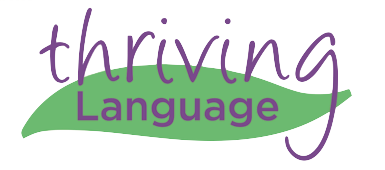We All Have a Context!
- Rebecca Skinner
- Apr 24, 2017
- 3 min read

It is widely accepted that 62-95% of young offenders have significant communication difficulties.
Why is this relevant to those of us working in Early Years?
Well, we know that children who enter school with language difficulties are at risk of literacy difficulties (Snow, 2009), behavioural problems (Lindsay et al 2007), and psychological problems (Beitchman et al 2001).
Still questioning the relevance?
Well, we also know that difficulties accessing the curriculum and developing peer relationships can lead to feelings of rejection and creates a vulnerability. Young people who have struggled to cope with the demands of the school system and who may have become socially isolated due to difficulties relating to others may seek acceptance and a sense of belonging, leaving them vulnerable to association with people already involved in crime.
Rejection from peer groups is thought to underpin gang cultures (Patten, 1998).
So, how is this our problem?
We all have a duty of care to children in our settings. We must create language-rich environments so that communication can thrive. We must also identify and support children who are having difficulties with acquiring and using language.
Let's consider the communication difficulties identified in young offenders:
difficulties expressing themselves through non-verbal, spoken and written communication
difficulties understanding language - understanding what has been said, understanding and interpreting body language and facial expressions
listening to what has been said
remembering information
difficulties expressing feelings and emotions - may use aggressive behaviour rather than words to express themselves
difficulties relating to others
(RCSLT)
For those of us working in Early Years, that list of communication difficulties could be used to describe the nature of the speech, language and communication needs (SLCN) we may encounter in the Foundation Stage.
Language development continues beyond childhood and into adolescence and involves the refinement of skills acquired in early childhood (Nippold, 2007).
So, if we don't support children in the early years to acquire and develop these skills or identify those children who will require specialist intervention such as Speech and Language Therapy, we are not fulfilling our duty of care.
We must not look at the statistics and conclude that children with SLCN are more likely to offend but we need to be aware that some of society's most vulnerable young people will have communication difficulties.
It would be so easy to hear the news headlines reporting on 'youth crime' and to form judgements, but we must also take a moment to consider the context of the individual. I am not making 'excuses' for committing crime but we have evidence that so many of these young people have not been able to access opportunities that many of us have been so fortunate to access. We must also consider 'missed opportunities' from those of us working with children and young people.
Early intervention for children with SLCN has been well documented and evidenced and with increasing cuts to services such as Speech and Language Therapy we have a responsibility to be pro-active and ensure teams in Early Years are trained to identify and support children with SLCN in settings.
Let's engage families in conversations about speech and language. Don't assume knowledge and use your position as Early Years experts to inform and educate service users.
I started this blog with a statistic that really saddens me and I wanted to share it with you because I truly believe we can improve outcomes for children and young people.
The children we work with are the future of society, never underestimate the impact you can have. And please, when you hear the case of a crime committed by a youth, just take a moment to consider the individual and don't rush to judge.
We all have a context, and we all have a 'story.'




















Comments